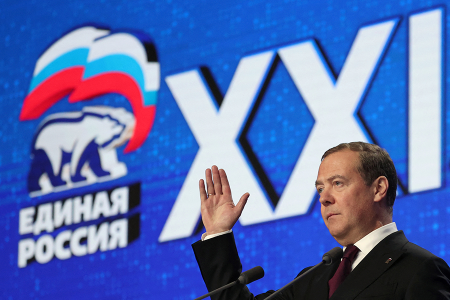"In my home there are few publications that we actually get hard copies of, but [Arms Control Today] is one and it's the only one my husband and I fight over who gets to read it first."
Russia Links Nonstrategic Nuclear Exercises to Threats
June 2024
By Xiaodon Liang
Russia conducted military exercises involving nonstrategic nuclear weapons in late May and framed the drills as a response to statements and actions by NATO in support of Ukraine. The invocation of nuclear options perpetuates a pattern of nuclear saber-rattling by Russia since the start of its full-scale invasion of Ukraine. (See ACT, September 2022.)

In a May 6 press release announcing the exercises, the Russian Foreign Ministry said the drills were intended to send a “sobering signal to the West.” Russia’s complaints include the delivery of French, UK, and U.S. strike missiles to Ukraine and the authorization of their use against targets in Russia. The Russian statement also referenced French President Emmanuel Macron’s May 2 interview with The Economist reaffirming that France has not ruled out sending its own troops to Ukraine.
Dmitry Medvedev, deputy chairman of the Russian security council, stated in a May 10 social media post that, under “certain circumstances,” the response to attacks against targets on Russian territories would not be limited to Ukraine and may involve “a special kind of arms.”
France and the United Kingdom have provided Ukraine with the Storm Shadow air-launched cruise missile, known in France as the SCALP-EG, for defense against the Russian invasion. The Russian statement describes the missile as a “long-range” weapon. Manufacturer MBDA lists a 250 kilometer range, but the UK Air Force claims the missile can operate out to 550 kilometers. These missiles first arrived in Ukraine last summer, but UK Foreign Minister David Cameron’s May 2 statement that the UK would not object to Ukraine using the missile against targets in Russia provoked the Russian response.
The Russian statement also criticized the United States for developing and producing ground-launched missile systems that would have been barred previously by the now-defunct Intermediate-Range Nuclear Forces (INF) Treaty. The statement said that Russia would terminate its unilateral moratorium on the deployment of these systems if the United States were to deploy such missiles in Europe or the Asia-Pacific region. (See ACT, May 2024.) U.S. intelligence believes that Russia had already deployed a weapons system barred by the INF Treaty, the 9M729 cruise missile. (See ACT, June 2019.)
The United States has not transferred missile systems to Ukraine that would have fallen within INF Treaty restrictions, but it has provided Kyiv with the Army Tactical Missile System, a ballistic missile with an estimated range of 300 kilometers, the State Department said on April 24. The Russian statement also criticized this transfer. A Defense Department spokesperson on May 6 described the announcement of the nonstrategic nuclear exercises as “irresponsible rhetoric,” adding that there was no change observed in Russia’s strategic posture.
The Russian Defense Ministry announced the first phase of the exercise in a May 21 Telegram social media post and said it involved units equipped with the Iskander missile system assigned to the Southern Military District, as well as aircraft of the Russian Aerospace Forces bearing the Kinzhal hypersonic missile. No end date was mentioned.
According to the ministry, the exercises involved handling nuclear warheads and pairing them with missiles, as well as maneuvers by the missile launchers and aircraft. In a Telegram post May 6, the ministry said that naval vessels would participate.
Russia often includes nonstrategic nuclear weapons in regular, large-scale exercises, but does not publicize separate drills of nonstrategic missile units. The delivery vehicles operated by these units may include shorter-range tactical missiles with a range of up to 300 kilometers, as well as longer-range missiles.
Estimates of the total number of Russian nonstrategic nuclear weapons are imprecise, but U.S. intelligence and independent sources place the number between 1,000 and 2,000.
Belarusian President Alexander Lukashenko confirmed on May 9 that his country’s military forces would take part in the nonstrategic nuclear weapons exercises, Tass reported. Days earlier, the Belarusian military had ordered snap inspections of units equipped with the Iskander missile system and the Su-25 combat aircraft.
Russian President Vladimir Putin announced in June 2022 that Russia would provide Belarusian forces with the nuclear-capable Iskander and configure Belarusian Su-25s for a nuclear role. In March 2023, he added that nuclear weapons would be stored in Belarus.
Open-source investigations conducted by independent analysts and The New York Times confirm progress in constructing a likely nuclear weapons storage site near Asipovichy, Belarus. In March, NATO officials, including Lithuanian Defense Minister Arvydas Anusauskas, told Foreign Policy that Russian nuclear forces had redeployed into Belarus.
